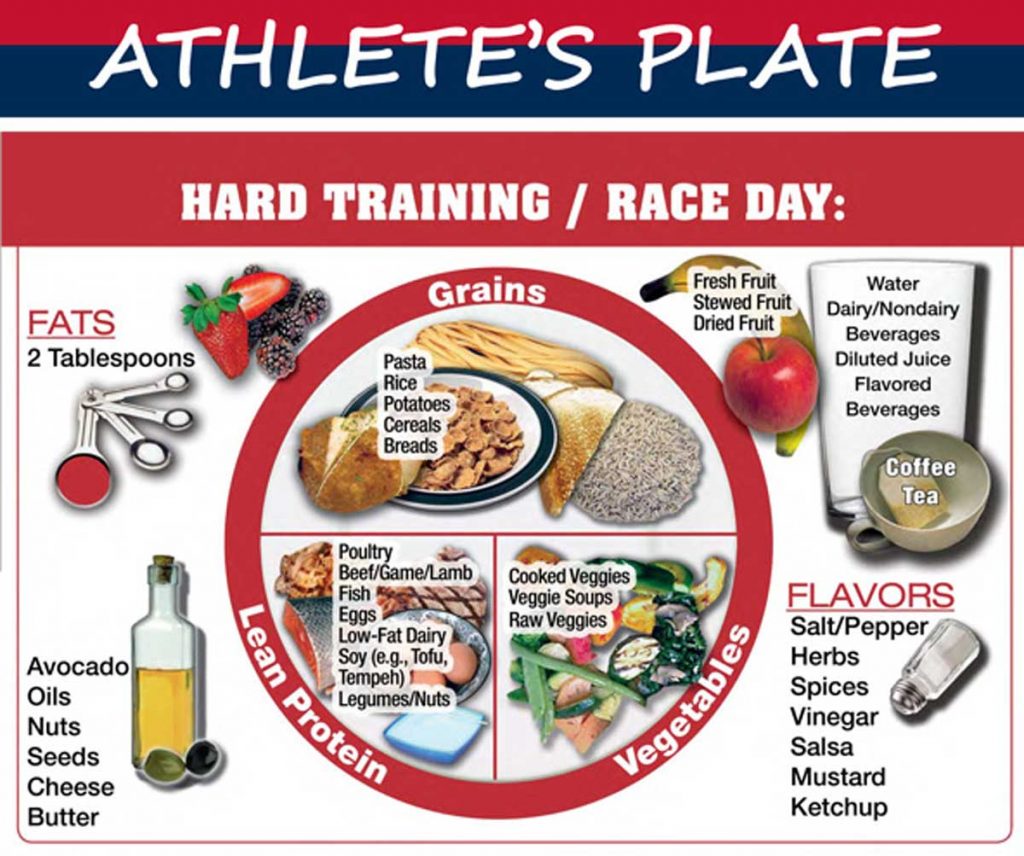Nutrition requirements for young athletes, defined as age 5 to 18 years, are unique in that energy and nutrient needs must meet the essentials for daily training and the demands of growth and development. Young athletes, children, and adolescents are not “small adults,” and approaches to dietary recommendations should reinforce nutrition for long-term health and a positive relationship with food.
The long-term focus of athletic development of youth athletes doesn’t start with high performance, but as the culmination of a step-wise model. Nutrition recommendations should not focus only on sports performance but should ensure needs are met for optimal growth, maturation, and development.
Nutritional recommendations and guidance for young athletes should begin with ensuring nutrition adequacy for proper development and building habits for a healthy relationship with food that carries into adulthood. This may include recognizing the value of balance and variety, highlighting the importance of critical nutrients for cognition, bone health, immune function, muscle growth and repair, gut health, optimal performance, and preventing injuries related to nutrient deficiencies. Fueling for growth, such as increasing muscle mass and for training and competition, are built upon this foundation.
Research regarding the nutritional needs of youth athletes is limited; therefore, most sport nutrition recommendations for youth are based on findings in adults.
In Part 1 of our series Nutrition for Young Athletes, we discuss energy and carbohydrate needs.
Strategy #1: Ensure Your Young Athletes Are Eating Enough Energy (Calories)
Energy expenditure is composed of four components: basal or resting metabolic rate, thermic effect of food (the energy needed to digest and metabolize the food we eat), thermic effect of activity (the energy to fuel activity and exercise), and the energy requirements for non-exercise activity such as brushing your teeth or getting out of bed in the morning.
The energy demands for proper growth and maturation are reflected in resting metabolic rate (RMR). RMR increases with increasing body mass; however, per unit of body mass, RMR decreases as we progress to our adult size.
Inadequate caloric intake or underfueling in young athletes may negatively impact growth and maturation through energy and nutrient deficiencies. There is no reason that youth athletes need to be on low-calorie diets or severely restricting caloric intake to make weight.
Chronically low energy availability, < 30 calories per kg of fat-free mass, has shown to :
- Impair growth and maturation,
- Negatively impact bone metabolism such as the increased risk of stress fractures and the development of osteoporosis later in life,
- Disrupt or cause the cessation of menstruation, and
- Suppress immune function.
The nutritional requirements of young athletes are influenced by:
- Current growth rate
- Physiological and metabolic capabilities (specifically carbohydrates)
- Sport and exercise demands (this is often the most significant contributor to energy expenditure in youth athletes)
Minimum recommendations for energy availability should be >45 calories per kg of fat-free mass daily.
Your young athletes should not follow any crazy or restrictive diets that omit entire food groups and/or severely limit energy availability.


Strategy #2: Adequate Carbohydrate Intake Daily and Pre and During Exercise for Performance
Specifically looking at carbohydrate recommendations, young athletes differ from adults in energy metabolism or the type of fuel used during exercise. Research suggests that young athletes have an “immature” glycolytic or anaerobic capacity, a higher reliance on oxidative pathways, and higher fat oxidation (Riddell, 2008). Before puberty, they have a higher dependence on exogenous carbohydrate sources during exercise.
Young athletes may benefit from consuming a carbohydrate beverage during intermittent high-intensity exercise by enhancing endurance capacity (Phillips et al., 2011).
Carbohydrate recommendations for young athletes are based on adult carbohydrate recommendations and can vary based on sport, intensity, and training volume:
- An overall diet containing a minimum of 50% of energy needs from carbohydrate and adolescents can follow adult carbohydrate recommendations as noted in the table below,
- A majority of carbohydrate should come from whole grains, fruits, and vegetables,
- As adolescents store less muscle glycogen, exogenous carbohydrate intake pre- and peri-exercise may be beneficial, and
- Carbohydrate loading is not recommended for children (Meyer et al., 2009).
- Whole grains such as rice, quinoa, corn, and barley;
- Whole grain products like pasta, bread, and bagels; and
- Starchy vegetables such as potatoes, peas, beans, and winter squashes like pumpkin and butternut squash.
And at least 1/4 of their plate from non-starchy vegetables such as broccoli, asparagus, spinach, mixed greens salads, Brussel sprouts, tomatoes, carrots, mushrooms, onions, and bell peppers.
Don’t forget to add fruits like berries, bananas, oranges, kiwi, pineapples, mango, peaches, pears, and apples.
Burke et al., 2011; Desbrow et al., 2014
References
- Meyer, F., O’Connor, H., Shirreffs, S.M. (2009). Nutrition for the young athlete. Journal of Sports Science, 25(Suppl1), S73-82.
- Riddell, M. C., Jamnik, V. K., Iscoe, K. E., Timmons, B. W., & Gledhill, N. (2008). Fat oxidation rate and the exercise intensity that elicits maximal fat oxidation decreases with pubertal status in young male subjects. Journal of applied physiology (Bethesda, Md. : 1985), 105(2), 742–748.
- Smith, J. W., Holmes, M. E., & McAllister, M. J. (2015). Nutritional Considerations for Performance in Young Athletes. Journal of sports medicine (Hindawi Publishing Corporation), 2015, 734649.
- Images from https://www.teamusa.org/nutrition
